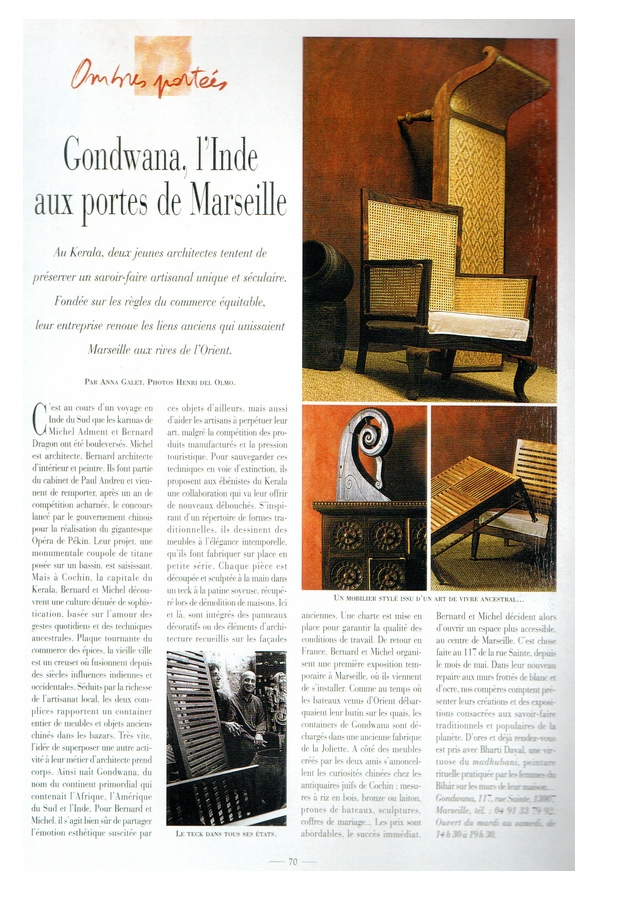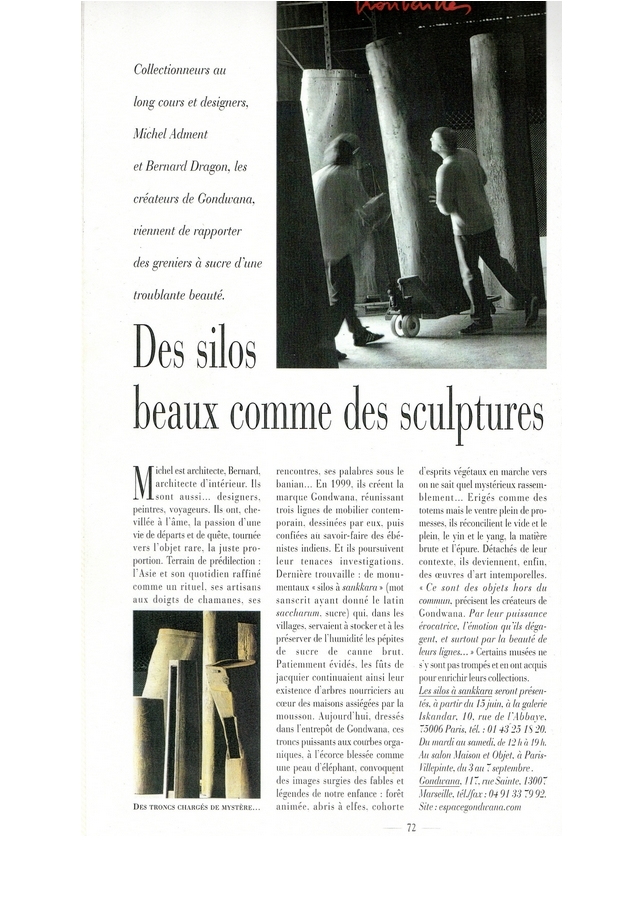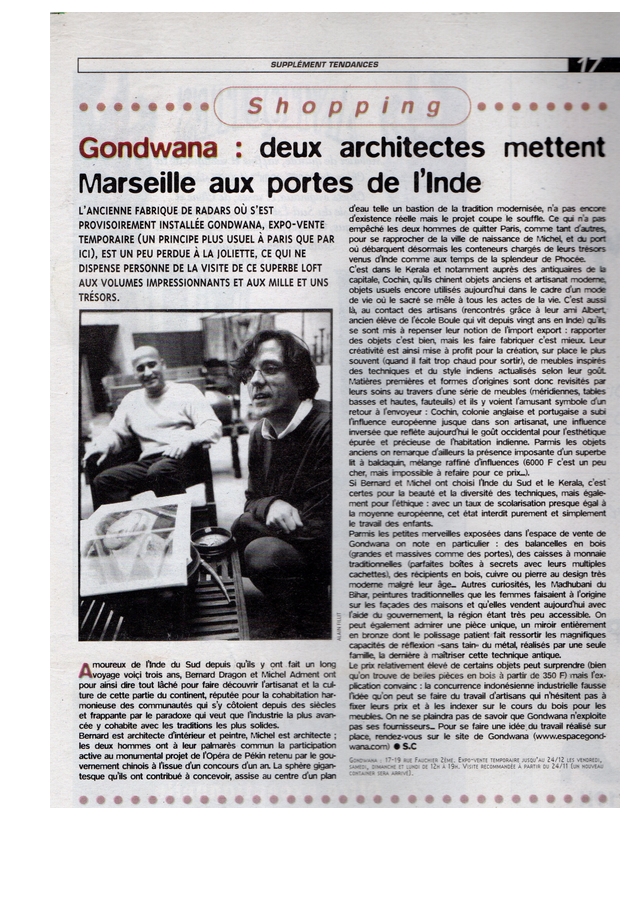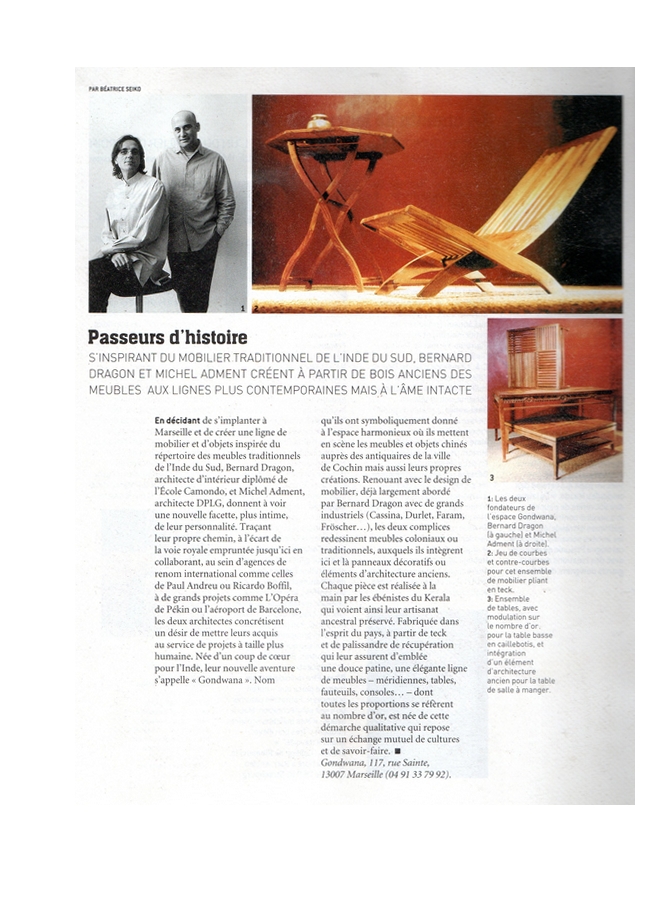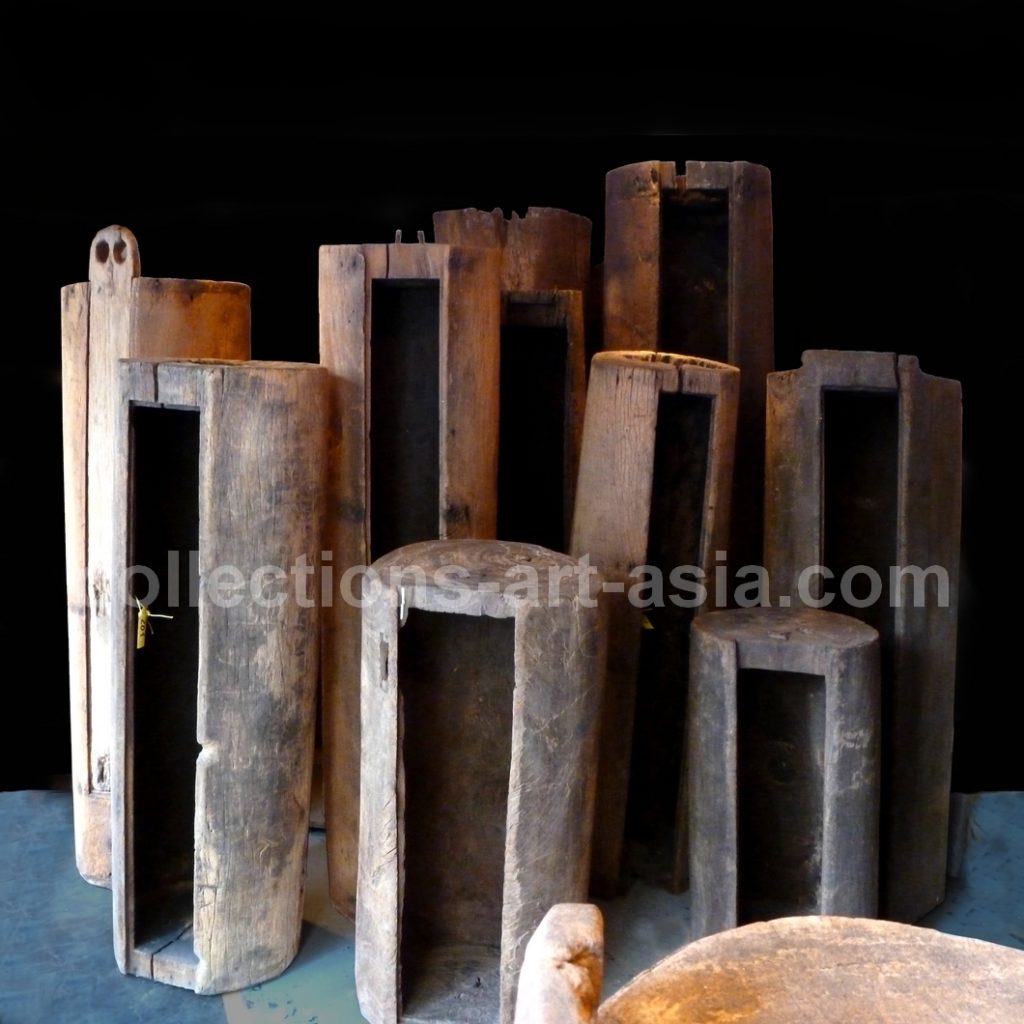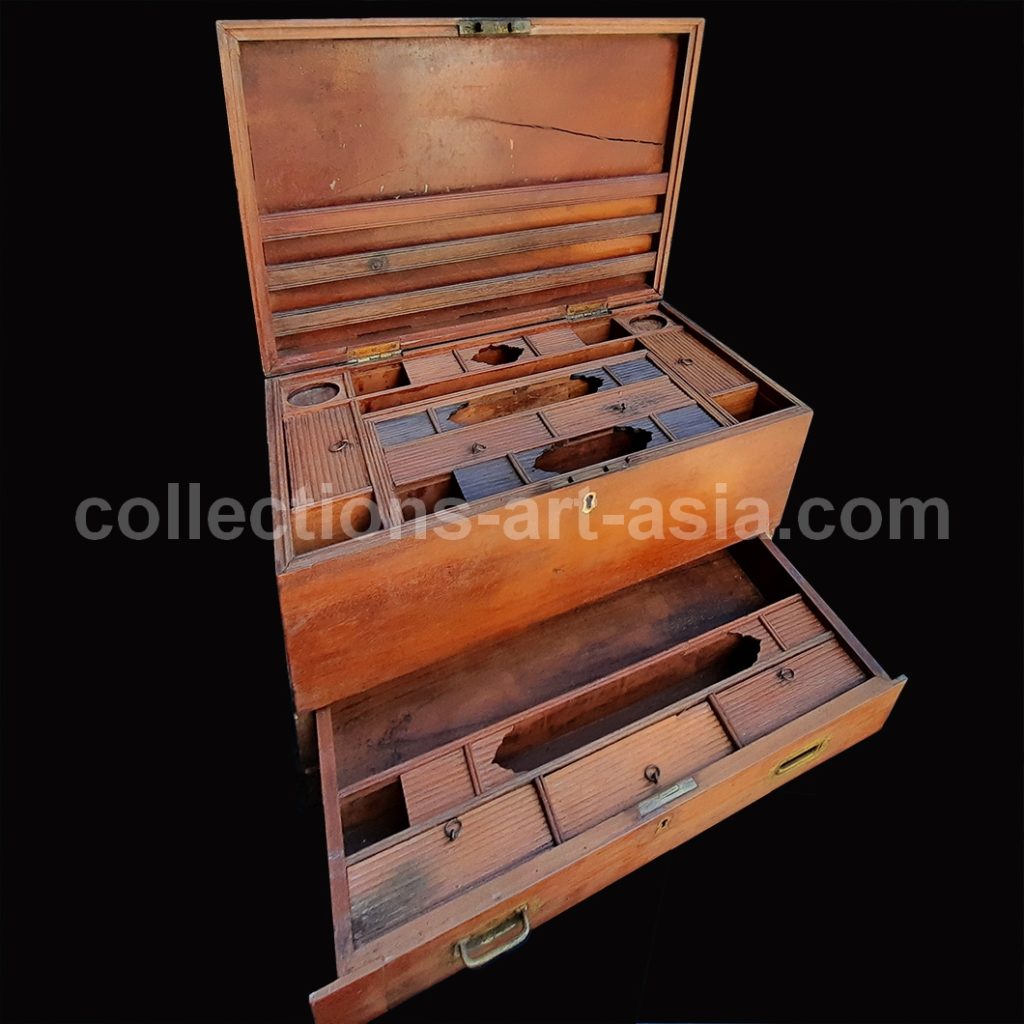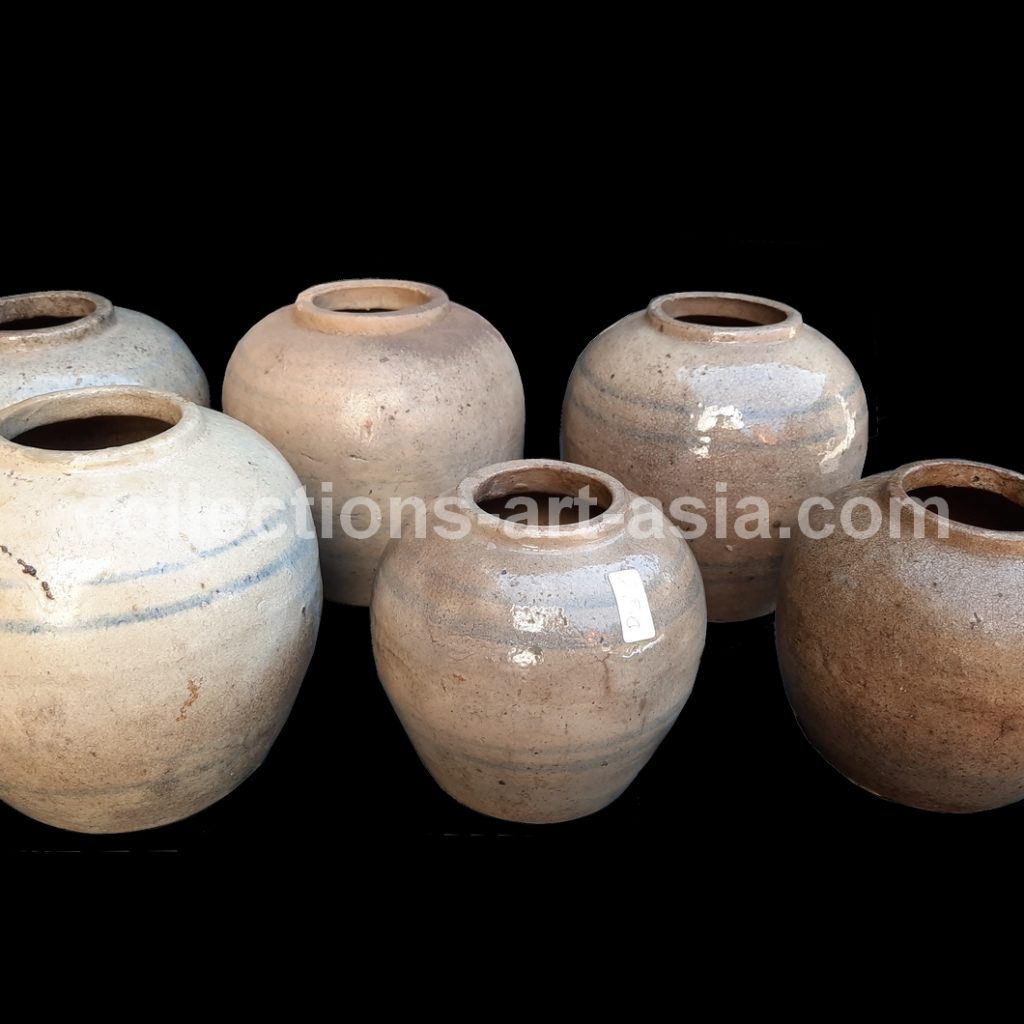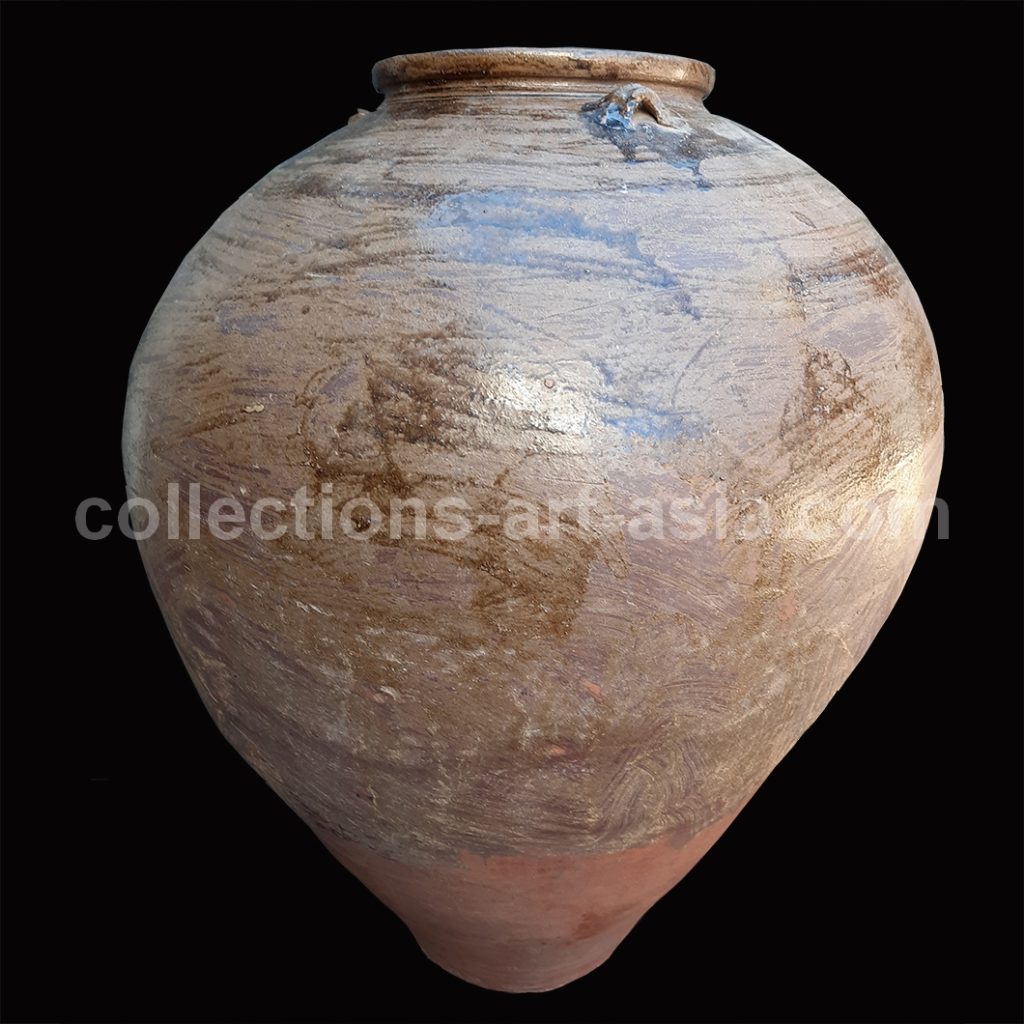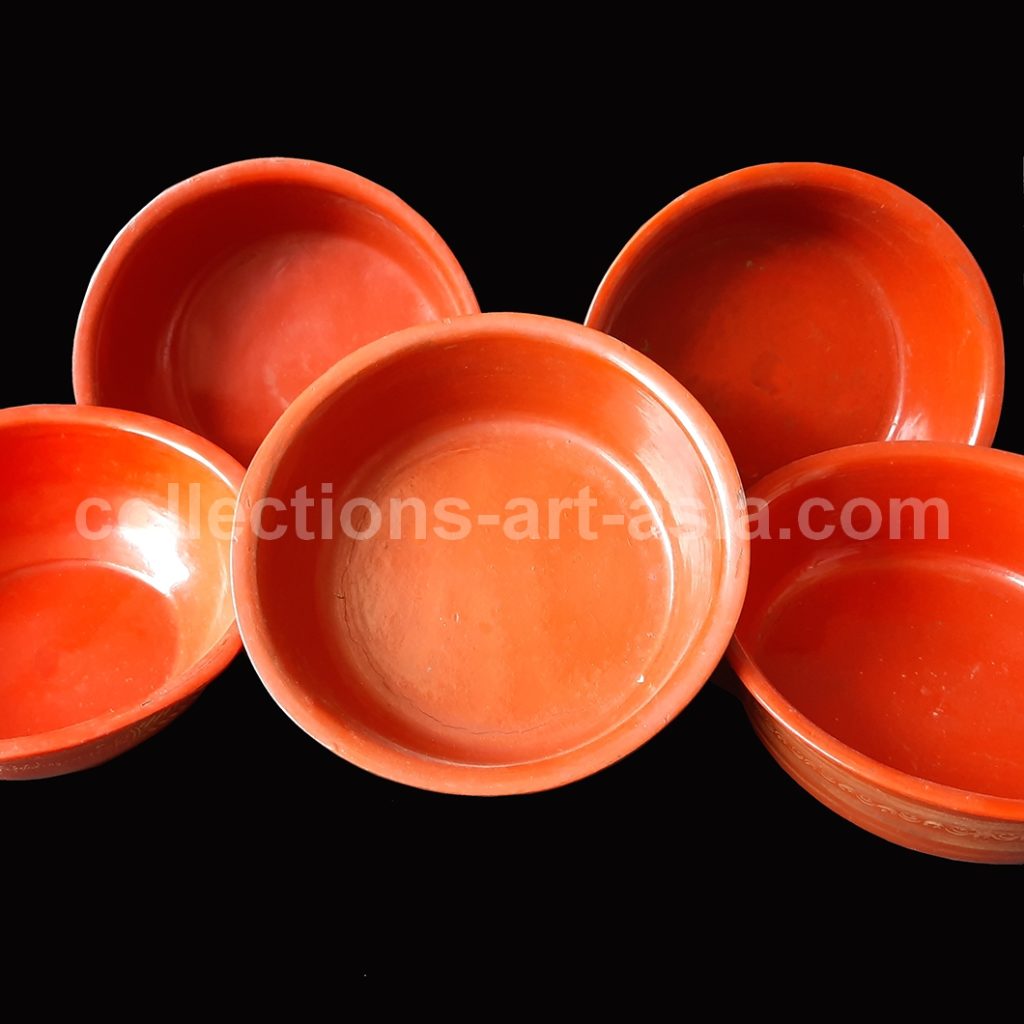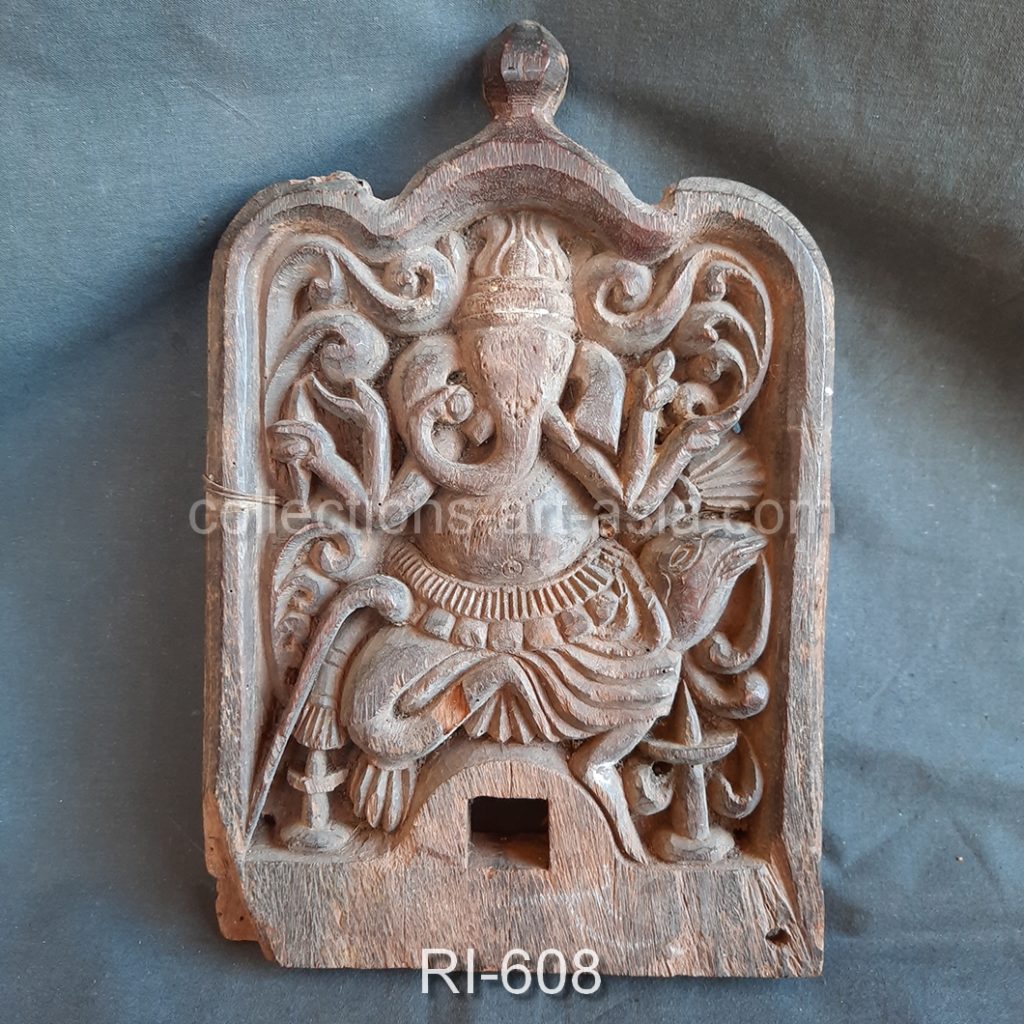Discover our Shop
Curated collections of Asian unique
Art, Handicraft and Antiques
Online Shop Catalogue
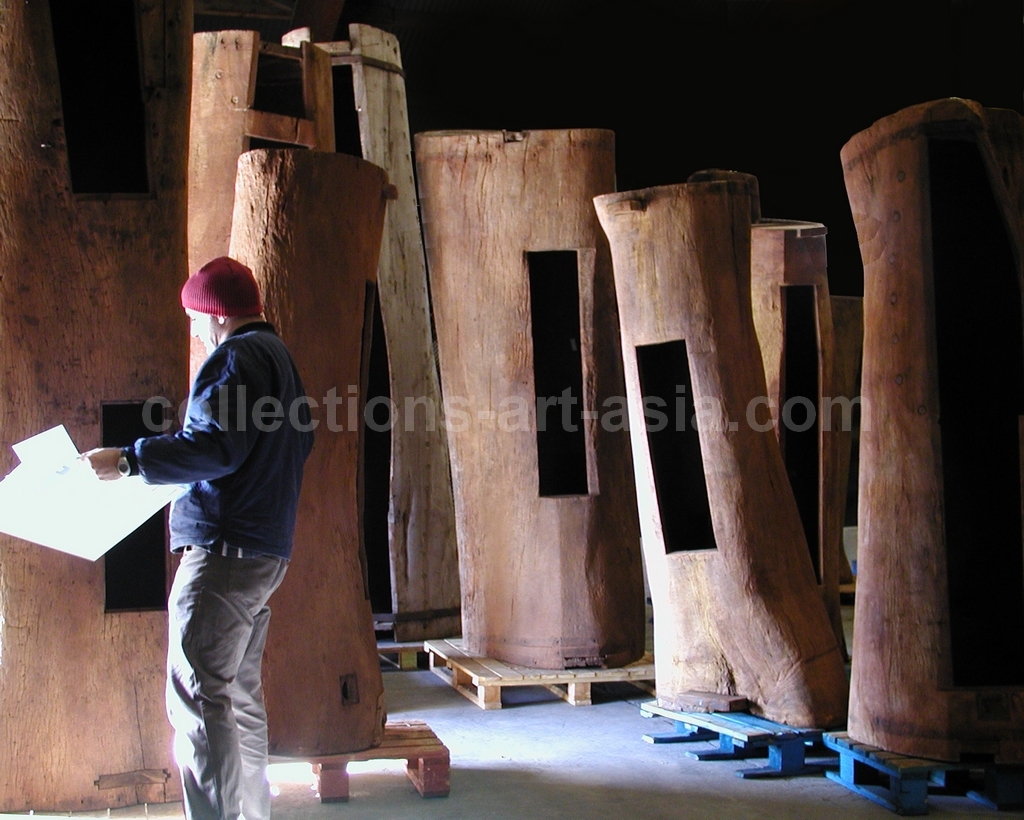
Asian Antiques
Sugar Silos « Sharkara Patti »
(South India)
These large « silos, » or sugar storage containers (sarkara in Sanskrit) are native to South India; carved in teak or wild jackfruit wood they measure up to 3.25 meters high. Used to store sugar made from palm trees, they date back to the 18th and 19th centuries and were typically the common property of a village community.
Their function of preserving the annual harvest of sugar was vital to the group.
Whole trees were hollowed out of their inner fibers, leaving a void encompassed by only a thin layer of wood and bark.
Snake Boat Heads
(Kerala-South India)
These figures are Kerala ship prow/stern, carved out of « anjili » wood (a wild jackfruit wood) or teck wood, common in the backwaters of the State in order to move from an island to another. They suggest the movement of the water in a wooden volute.
The snake boats are known thanks to the Nerhu Trophy Boat Race, Vallam Kali in Kerala language, which occurs in Alappuzha in August every year. The traditional boat race in the Southern State of India, Kerala, is a form of canoe racing which uses paddled war canoes. It is conducted during the season of the harvest festival Onam in the backwaters of the State.
Chests and Boxes
(South India)
Cash boxes were found in the shops all over India. This collection of boxes are from South India, mainly from Tamil Nadu, used to store the cash and all valuable documents necessary for running business.
To this regard, they are comprised of compartments and secret lockers. They are made of teck or Indian palisander wood with brass inlets.
Ginger Pots
(China)
This collection of small antique sandstone glazed jars were mainly imported to India from China during the late Ming period (about 1600). They were used as containers for transporting ginger and other rare spices.
The marking at the button varies from a blue hand painted calligraphy to pressed Chinese signs. They are decorated with simple blue line on grey glazing or with blue on white glazed sea scape.
Swatow Ware
(China)
Zhangzhou (Swatow) Wares is a specialised group of chinese ceramics characterises by the sandy grits on the base, heavy /coarse potting but somehow attracts many collectors with its spontaneously executed blue decoration. Swatow are mainly late Ming dynasty Chinese export porcelain wares.
Swatow wares were originating from Zhangzhou with production centres located in the prefecture of the Southern Chinese province of Fujian.
Jars
(China/Burma)
This collection of terracota jars comprised of one Chinese jar and a set of 19th Century Burmese jars. The large terracota Chinese is a late Yuan Period (1340) jar and was used to store and transport rare Chinese pikles to South East Asia. Burmese dark glazed terracota jars were decorated with carved and pressed floral elements and used to store perishable goods.
Lacquers Ware
(Burma)
Burmese lacquerware is an ancient South Asian traditional art using tree sap and natural fibers to make containers mostly for sacred purpose. It is frequent to find among the engraved floral decoration, poems and prayers in Burmese characters. This collection was imported to India by the Southern merchant community of Chettinad in Tamil Nadu from mid 19th to mid 20th Century. It comprised of plates, offering trays and bowls from early 20th Century.
Antique Ritual Items
(South India)
This collection comprises a series of different types of South Indian religious items from Kerala and Tamil Nadu such as, among other, Kumkum boxes, Vibhooti box, pallagulhi, kavadi, lamp stand and oid lamps….
In India all the everyday use items are connected with a sense of spirituality confering them an intangible dimension.
Press Release
